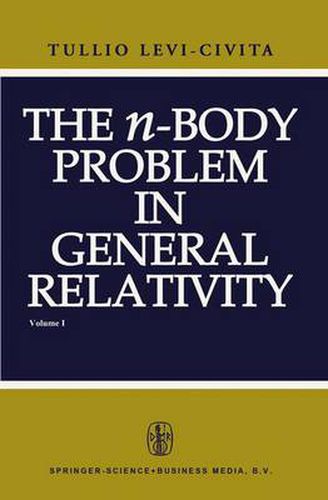Readings Newsletter
Become a Readings Member to make your shopping experience even easier.
Sign in or sign up for free!
You’re not far away from qualifying for FREE standard shipping within Australia
You’ve qualified for FREE standard shipping within Australia
The cart is loading…






This title is printed to order. This book may have been self-published. If so, we cannot guarantee the quality of the content. In the main most books will have gone through the editing process however some may not. We therefore suggest that you be aware of this before ordering this book. If in doubt check either the author or publisher’s details as we are unable to accept any returns unless they are faulty. Please contact us if you have any questions.
1 IN THE MONOGRAPH SERIES directed by Henri Villat , several fasci- cules have been devoted to Relativity. First there are the general presentations ofTh. De Donder (nos. 8, 14, 43, 58), and then those more specifically devoted to Einsteinian gravitation - notably Georges Darmois’s contribution (no. 25) and that of J. Haag (no. 46) on the Schwarzschild problem. The present fascicule takes its place alongside the two latter monographs, but it has been conceived and composed in such a way that it may be read and understood by anyone with a knowledge of the principles of Absolute Differential Calculus and of Relativity - either from the original exposi- tions of Einstein, Weyl, or Eddington, or, in French, from Cartan’s excel- 2 lent works (for everything having to do with mathematical theories) and 3 from Chazy’s (for Relativity and Celestial Mechanics), or naturally from Levi-Civita’s The Absolute Differential Calculus (first edition, London and Glasgow, Blackie and Son, 1927) where the two original papers written in Italian are brought together: namely, Calcolo differenziale assoluto and Fondamenti di meccanica relativistica (Bologna, Zanichelli). As for the present fascicule, it is hardly necessary to point out that, as its title indicates, we seek to establish in the simplest possible terms the rela- tivistic aspect of what Newton and those who followed him regarded as the key to ordinary Celestial Mechanics.
$9.00 standard shipping within Australia
FREE standard shipping within Australia for orders over $100.00
Express & International shipping calculated at checkout
This title is printed to order. This book may have been self-published. If so, we cannot guarantee the quality of the content. In the main most books will have gone through the editing process however some may not. We therefore suggest that you be aware of this before ordering this book. If in doubt check either the author or publisher’s details as we are unable to accept any returns unless they are faulty. Please contact us if you have any questions.
1 IN THE MONOGRAPH SERIES directed by Henri Villat , several fasci- cules have been devoted to Relativity. First there are the general presentations ofTh. De Donder (nos. 8, 14, 43, 58), and then those more specifically devoted to Einsteinian gravitation - notably Georges Darmois’s contribution (no. 25) and that of J. Haag (no. 46) on the Schwarzschild problem. The present fascicule takes its place alongside the two latter monographs, but it has been conceived and composed in such a way that it may be read and understood by anyone with a knowledge of the principles of Absolute Differential Calculus and of Relativity - either from the original exposi- tions of Einstein, Weyl, or Eddington, or, in French, from Cartan’s excel- 2 lent works (for everything having to do with mathematical theories) and 3 from Chazy’s (for Relativity and Celestial Mechanics), or naturally from Levi-Civita’s The Absolute Differential Calculus (first edition, London and Glasgow, Blackie and Son, 1927) where the two original papers written in Italian are brought together: namely, Calcolo differenziale assoluto and Fondamenti di meccanica relativistica (Bologna, Zanichelli). As for the present fascicule, it is hardly necessary to point out that, as its title indicates, we seek to establish in the simplest possible terms the rela- tivistic aspect of what Newton and those who followed him regarded as the key to ordinary Celestial Mechanics.